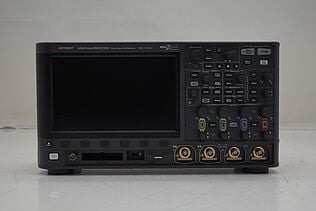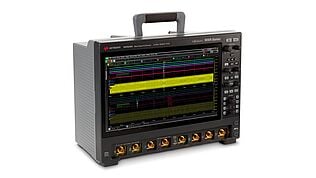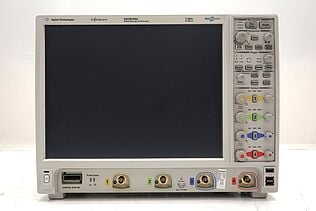- Introduction
- Understanding Aliasing
- The Nyquist Theorem
- Effects of Aliasing
- Impact of Sampling Rate on Aliasing
- Preventing Aliasing
- 1. Use Anti-Aliasing Filters
- 2. Increase Sampling Rate
- 3. Understand Your Signal
- Practical Applications
- Oscilloscopes
- Digital Signal Processing (DSP)
- Communication Systems
- Control Systems
- Conclusion
- Whenever You’re Ready, Here Are 5 Ways We Can Help You
Imagine you’re analyzing a high-frequency signal with your oscilloscope, only to find unexpected frequencies popping up in your data.
These ghost frequencies aren't errors in your signal but a phenomenon called aliasing.
Misunderstanding aliasing can lead to inaccurate measurements and faulty analyses, making it crucial to grasp how it happens and how to prevent it.
Understanding Aliasing
Aliasing occurs when a continuous signal is sampled at a rate insufficient to capture its changes accurately. This results in the observance of false frequencies, or aliases, that were not present in the original signal.
The Nyquist Theorem
The key to preventing aliasing lies in the Nyquist Theorem. According to this theorem, to sample a signal without introducing aliasing, you must sample at a rate at least twice the highest frequency present in the signal. This rate is known as the Nyquist rate.
| Key Takeaway |
|---|
| Aliasing occurs when a signal is undersampled, leading to false frequencies that distort the original data. Preventing aliasing requires sampling at a rate at least twice the highest frequency in the signal and using anti-aliasing filters. |
Empower Your Projects With a Used Keysight Oscilloscope
Effects of Aliasing
Aliasing can significantly impact the accuracy and reliability of your signal analysis. Here are some of the key problems it can cause:
- Distorted waveforms: Aliasing distorts the reconstructed signal, making it look different from the original. This happens because sample points do not accurately represent the waveform, leading to misleading visualizations. Distorted waveforms make it difficult to diagnose issues, design circuits, or verify signal integrity.
- Incorrect frequency measurement: One of the most deceptive effects of aliasing is the appearance of false frequencies, known as aliases, in the signal spectrum. These aliases result from undersampling and can mislead you into thinking there are components in your signal that do not actually exist. This can be particularly problematic in applications like communication systems, where precise frequency analysis is crucial for performance and regulatory compliance.
- Data misinterpretation: Engineers and technicians may make incorrect decisions based on aliased data, such as tweaking designs based on false signals or overlooking critical issues masked by aliasing artifacts. This misinterpretation can cause delays, increased costs, and compromised performance in engineering projects.
- Noise and interference: When high-frequency noise is aliased into the lower frequency range, it can obscure the true signal and make it difficult to distinguish between actual signal components and noise.
- Compromised signal integrity: In digital signal processing applications, aliasing can compromise the integrity of the processed signal. For instance, when performing operations like filtering, Fourier transforms, or modulation, aliasing can introduce errors that degrade the quality and accuracy of the processed output.
Impact of Sampling Rate on Aliasing
| Sample Rate | True Frequency | Nyquist Frequency | Aliased Frequency | Effect |
|---|---|---|---|---|
| 40 Hz | 50 Hz | 20 Hz | 10 Hz | High aliasing, distorted signal |
| 100 Hz | 50 Hz | 50 Hz | 50 Hz | Accurate, no aliasing |
| 80 Hz | 60 Hz | 40 Hz | 60 Hz | Accurate, no aliasing |
| 120 Hz | 50 Hz | 60 Hz | 50 Hz | Accurate, no aliasing |
| 200 Hz | 75 Hz | 100 Hz | 75 Hz | Accurate, no aliasing |
| 180 Hz | 110 Hz | 90 Hz | 70 Hz | Moderate aliasing, false frequency |
| 240 Hz | 90 Hz | 120 Hz | 90 Hz | Accurate, no aliasing |
Table Breakdown
- Sample rate: The rate at which the signal is sampled.
- True frequency: The actual frequency of the signal being sampled.
- Nyquist frequency: Half of the sample rate, representing the maximum frequency that can be accurately sampled without aliasing.
- Aliased frequency: The frequency that appears in the sampled data when the true frequency exceeds the Nyquist frequency.
- Effect: Describes the impact of the sampling rate on the signal, noting whether aliasing occurs and its severity.
Preventing Aliasing
Aliasing can significantly distort your signal analysis, but you can prevent it by following these guidelines.
1. Use Anti-Aliasing Filters
Anti-aliasing filters are essential tools in signal processing. These low-pass filters are designed to remove high-frequency components from the signal before it reaches the sampling stage.
By filtering out frequencies above the Nyquist rate, anti-aliasing filters ensure that only frequencies that can be accurately sampled remain. This preemptive step will prevent high-frequency noise from creating false, aliased frequencies.
When choosing an anti-aliasing filter, consider its cutoff frequency and ensure it aligns with your system's sampling requirements.
2. Increase Sampling Rate
Sampling at a rate higher than the Nyquist rate helps to minimize the risk of aliasing by ensuring that each cycle of the signal is sampled multiple times, providing a clearer and more detailed representation.
When working with signals of unknown or varying frequencies, use a higher sampling rate to account for unexpected high-frequency components.
3. Understand Your Signal
Start by analyzing your signal to identify its highest frequency component. This can be achieved using frequency analyzers or spectral analysis tools.
Once you have identified the highest frequency, set your sampling rate to at least twice this frequency to meet the Nyquist criterion. Consider the nature of your signal—whether it is periodic or aperiodic, continuous or discrete—as this will influence your approach to sampling and filtering.
Practical Applications
Understanding and preventing aliasing is essential across various fields of electrical engineering and signal processing. Here’s how aliasing impacts some common applications and how you can mitigate its effects.
Oscilloscopes
Many modern oscilloscopes come equipped with built-in anti-aliasing filters that automatically adjust sampling rates based on the signal being measured. These features help to ensure that your waveform displays are accurate and free from aliasing artifacts.
To maximize accuracy, always verify that your oscilloscope's sampling rate is set to at least twice the highest frequency component of the signal you are analyzing. You may also want to consider using external anti-aliasing filters for more demanding applications.
Digital Signal Processing (DSP)
Accurate DSP relies on proper sampling rates to maintain the integrity of signal transformations and calculations. To prevent aliasing, always ensure that your sampling rate meets the Nyquist criterion.
Incorporate anti-aliasing filters into your signal chain to remove high-frequency noise before digitizing the signal. This practice is particularly important in applications like audio processing, telecommunications, and image processing, where precision is paramount.
Communication Systems
Aliasing in communication systems can lead to inefficient spectrum use and interference with other signals. Ensuring that your sampling rates are set correctly and employing anti-aliasing filters can help maintain clear and accurate signal transmission and reception. In applications such as radio frequency communication, maintaining signal integrity is critical for performance and regulatory compliance.
Control Systems
Aliasing in control systems has the potential to cause instability and generate inaccurate control signals. By using appropriate sampling rates and anti-aliasing measures, you can ensure that control systems operate smoothly and respond accurately to inputs.
Browse Our Selection of Used Oscilloscopes
Select up to 3 instruments to compare
Enable Notifications
In order to use this feature, you need to enable notifications.
Manage notification preferences
Conclusion
Aliasing is an important concept in signal processing that can significantly distort your measurements if not properly managed.
By understanding the Nyquist Theorem, using anti-aliasing filters, and setting appropriate sampling rates, you can prevent aliasing and ensure accurate signal representation.
These practices are essential for maintaining the integrity of your data in various applications, from oscilloscopes to digital signal processing and communication systems.
For reliable and accurate signal analysis, consider investing in high-quality equipment. Visit the Keysight Used Equipment Store for premium used oscilloscopes, network analyzers, function generators, and multimeters. Equip yourself with the best tools to ensure precision in your engineering projects.

Whenever You’re Ready, Here Are 5 Ways We Can Help You
- Browse our Premium Used Oscilloscopes.
- Call tech support US: +1 800 829-4444
Press #, then 2. Hours: 7 am – 5 pm MT, Mon– Fri - Talk to our sales support team by clicking the icon (bottom right corner) on every offer page
- Create an account to get price alerts and access to exclusive waitlists.
- Talk to your account manager about your specific needs.












































